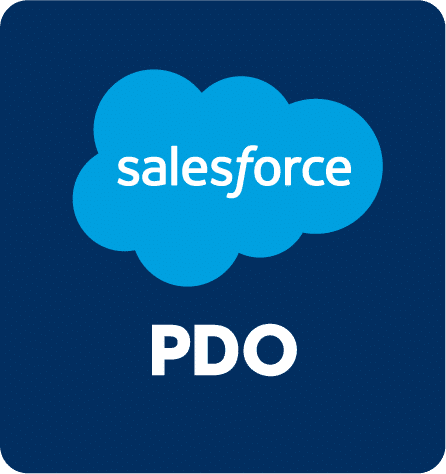
- Mulesoft
How Can Salesforce MuleSoft Integration Enhance Your Business?
Salesforce is the focal point of all CRM systems, encompassing and managing the entire customer database and services. To maintain a strong customer relationship, it is essential to handle them well! While businesses have developed strategies and embraced advanced technology, without the use of MuleSoft, these efforts are practically meaningless and futile.
Today, let’s delve into MuleSoft, a pioneer in Integrations, Reliability, Agility, Security, and Scalability, ensuring the seamless integration of diverse applications and systems for efficiency and growth. Salesforce MuleSoft integration is facilitated by MuleSoft’s Anypoint Platform, connecting Salesforce with various applications, bringing a plethora of benefits to businesses.
Salesforce MuleSoft integration enables the smooth flow of data across platforms, streamlining processes and fostering a more connected digital ecosystem.
In this blog, we’ll explore the key ways in which MuleSoft integration Salesforce can elevate your business operations, offering insights into best practices and tips for a successful implementation.
Also Read: Exploring the Benefits of MuleSoft Integration Services
Table Of Content
- What is Salesforce MuleSoft Integration?
- How Can Salesforce MuleSoft Invest in Seamless Business Integration?
- What Are The Benefits Of MuleSoft Salesforce Integration In Businesses?
- Conclusion
What is Salesforce MuleSoft Integration?
MuleSoft integration Salesforce is a strategic approach that uses MuleSoft’s Anypoint Platform to link other applications or systems with Salesforce, a potent customer relationship management (CRM) platform. The smooth data flow between Salesforce and other business systems made possible by this integration encourages productivity and teamwork. MuleSoft is essential for unlocking systems and data via integration, boosting productivity through automation, and helping businesses with their digital transformation. Organizations can fully utilize Salesforce-MuleSoft integration by comprehending the end-to-end business requirements, assigning roles, and completing security configurations. This dynamic synergy facilitates operations, improves business processes, and advances organizational growth as a whole.
How Can Salesforce MuleSoft Invest in Seamless Business Integration?
Salesforce integration with mulesoft plays a pivotal role in enhancing business operations by connecting Salesforce with diverse applications and systems through MuleSoft’s Anypoint Platform.
To achieve the absolute seamless integration and optimize business processes, we’d suggest your organization should consider the following key strategies:
Understand End-to-End Business Requirements:
It is essential to first gain a comprehensive understanding of your business requirements to ensure the integration addresses specific needs effectively.
Segregate Responsibilities:
Equally imperative is to clearly define and segregate responsibilities between the Salesforce and MuleSoft teams. This ensures a streamlined collaboration for successful integration.
Finalize Security Settings:
Organizations must prioritize security by finalizing robust settings to safeguard data during the integration process. This includes authentication mechanisms and access controls.
Embrace API-Led Connectivity and Reuse:
Finally, they should Leverage API-led connectivity and encourage the reuse of APIs. This enhances flexibility, scalability, and efficiency in the integration process.
Stay Informed on Latest Salesforce Cloud Connectors:
Keeping abreast of the latest Salesforce cloud connectors to ensure compatibility and further on taking advantage of new features that can further enhance integration.
What Are The Benefits Of MuleSoft Salesforce Integration In Businesses?
Salesforce MuleSoft integration offers a great set of benefits, transforming the way businesses operate and innovate. Here’s how:
1. Less Dependence:
Integrate Salesforce with diverse applications, reducing reliance on individual systems and fostering a more interconnected business environment.
2. Money And Energy Savings:
Streamline operations, cut unnecessary costs, and optimize resource utilization, leading to significant financial and energy savings.
3. Error Reduction:
Automate data exchange and workflows, minimizing manual errors and ensuring accurate, real-time information flow.
4. Boost Agility:
Embrace agility with seamless connectivity, empowering teams to adapt quickly to market changes and evolving business needs.
5. Enhance Project Worth:
Elevate project value by integrating Salesforce and MuleSoft, facilitating efficient collaboration and information exchange between different project components.
6. Upgrade With Ease:
Simplify the process of upgrading systems and applications, ensuring a smooth transition without disruptions.
7. Easily Connect And Reuse Data, Apps, And Services:
Seamlessly connect, share, and reuse data, applications, and services across your entire business ecosystem for enhanced efficiency.
8. Retain And Inspire Customers:
Deliver a cohesive customer experience by consolidating customer data and providing personalized, integrated services, enhancing customer retention and satisfaction.
9. Reduce Security Breach Risks And Costs:
Bolster security measures by centralizing control over data access, mitigating the risks and costs associated with security breaches.
10. Adaptable And Versatile:
Adapt to changing business landscapes with a versatile integration platform that accommodates diverse applications and technologies.
11. Prepare For The Future:
Future-proof your business by establishing a flexible foundation that can readily accommodate new technologies and innovations.
12. Reduced Maintenance Costs:
Lower maintenance costs by optimizing and centralizing the management of integrated systems, reducing the overall burden on IT resources.
Conclusion
To sum up, Salesforce MuleSoft integration is an essential tool that helps companies connect and collaborate seamlessly across a range of systems and applications. This integration drives digital transformation and improves overall business performance by enabling effective data exchange through MuleSoft’s Anypoint Platform, as highlighted in the sources provided.
Businesses can maximize the benefits of their Salesforce-MuleSoft integration by following best practices, such as API-led connectivity and comprehension of integration patterns. Because MuleSoft makes it easier to unlock systems and data and boosts productivity through automation, this integration is essential for IT teams looking to optimize operations. Adopting MuleSoft integration Salesforce becomes a strategic necessity as businesses traverse the changing digitalization landscape and lay the groundwork for future growth and innovation.







